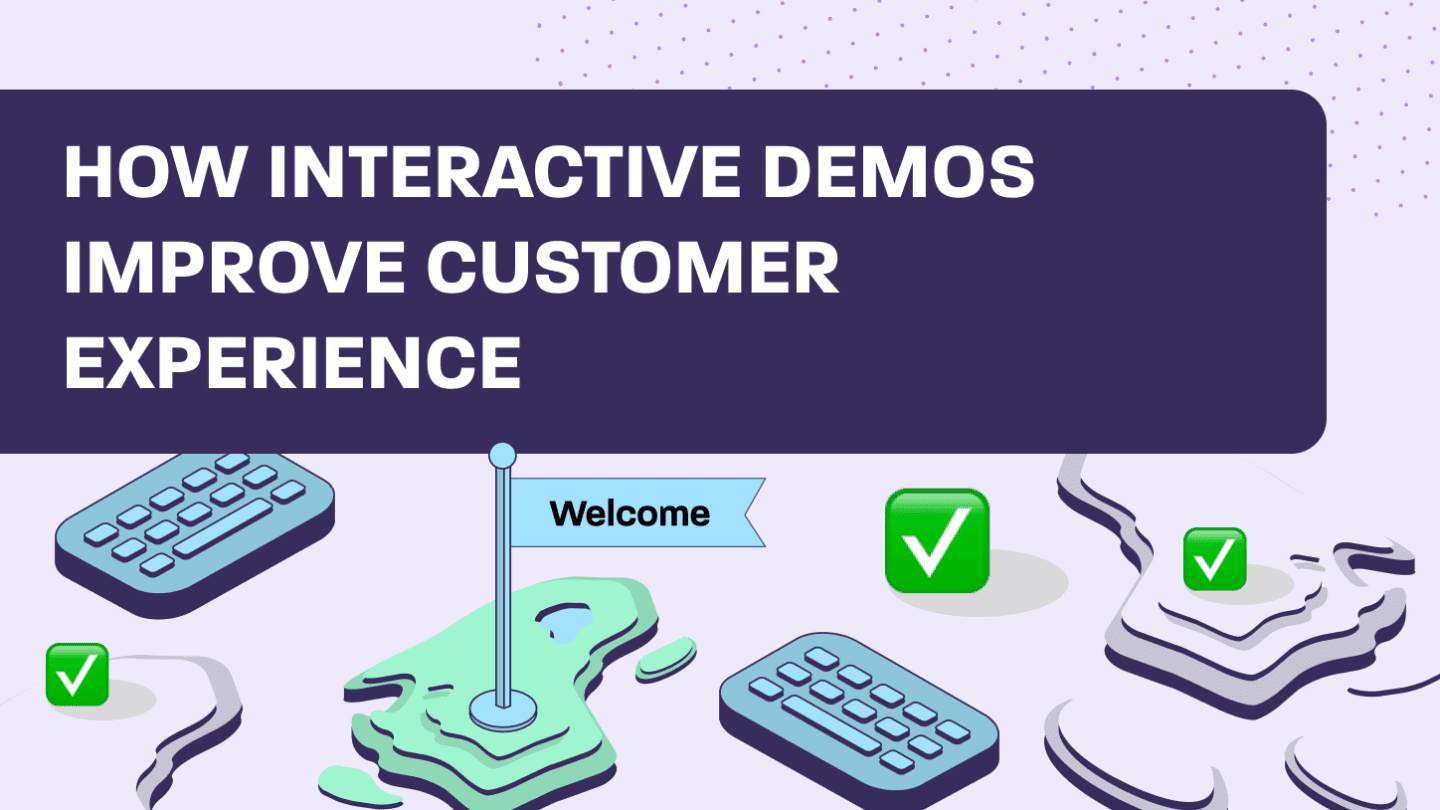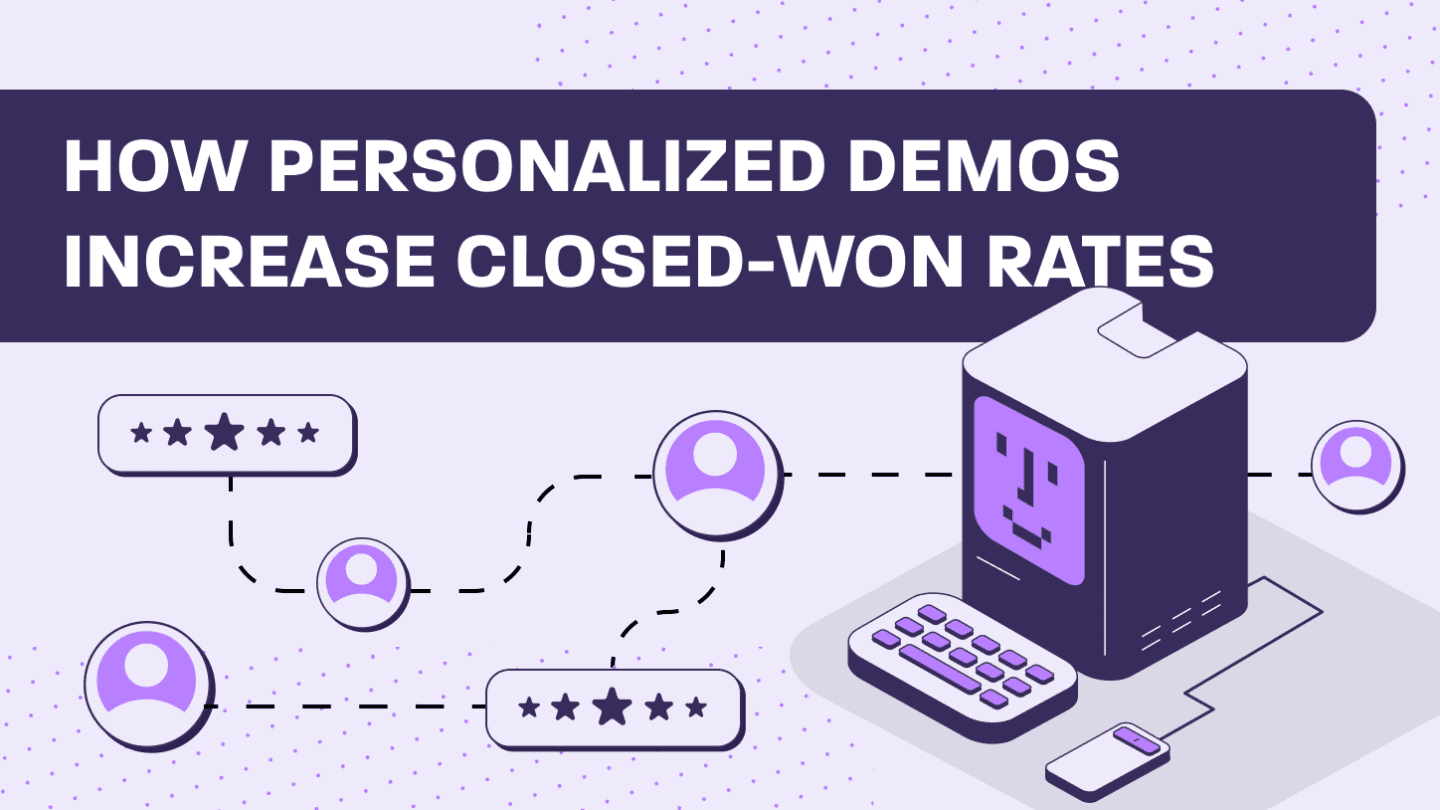Updated October 24, 2023.
What’s the lifeblood of any B2B SaaS sales process?
The product demo, of course!
It’s the first opportunity you have to demonstrate what your product can do for a prospect. And once you’ve shown them how your software can solve their problems and add value, closing the deal becomes much easier.
But half the battle is getting the prospect to agree to the demo. And winning this battle requires just as much thought and consideration as the demo itself.
So, how can you get prospects to say “yes, please” to your requests to schedule a demo? In this article, we’ll go over everything you need to know about writing a winning schedule a demo email and take a look at a few templates to help you get started.
Best practices for schedule a demo emails
Prospects are busy, plain and simple.
And there’s a good chance they might be speaking with your competitors as well to explore all of their options.
So, while getting the schedule a demo email right may seem daunting, no worries! That’s what we’re here for.
To help you score more demo appointments, we’ve rounded up some of the best practices for writing a request to schedule a demo email.
Qualify the prospect
Step away from the keyboard!
Before you even start to draft your product demo invitation emails, you need to make sure that you are speaking with the right people.
In order to do that, you’ll need to qualify your B2B leads. By researching your prospect’s company and their position within it, you can work to understand their potential needs. You can also make sales discovery calls to go even deeper into understanding who the decision-makers are, their technical proficiency, their needs and pain points, and budget.
After learning more about your prospect, you’ll be able to determine if it’s worth continuing the discussion.
And even if it’s not, that’s okay too. Finding out your product isn’t right for a particular lead during discovery will save you time and help you focus your efforts on prospects that are more likely to purchase your product.
Mallorie Maranda, the VP of Sales at WorkRamp, spoke to us about the importance of disqualifying quickly, noting, “If you’re disqualifying deals quickly and only focusing on the people who really see the value of your product, you’re going to grow your deal size because you’re focusing your energy in the right place. You’ll be successful.”
Include the right information
Remember, in your request to schedule a product demo email you’re selling a meeting—not the actual product!
So, when it comes to the tone of your email, it’s all about balance. Don’t overdo it with facts and figures. But you’ll still need to be careful that you’re not too vague that the client can’t see the value in meeting with you.
In your schedule a demo email, you should be able to answer questions like:
- Why should the client take the time to meet with you?
- What value can you offer them in their lives?
- What will prospects see in your demo?
- Why should they choose your company and not a competitor?
- How much time will this demo take?
By addressing these questions in your email, you’ll be able to highlight the value your product can bring and how it can address your prospect’s specific needs.
Use clear and concise language
First and foremost, you’re writing an invitation. So, you’ll want to make sure your email reads like, well, an invitation and not like an essay.
Prospects have limited amounts of time, so it’s important to only include the information that’s absolutely necessary. It can also help to use short sentences so prospects can easily skim your email.
By sending an email that’s straight to the point and easy to digest, you’ll not only increase the likelihood that prospects will read your email, but also that they’ll schedule a demo.
Make sure the tone is appropriate
You’re excited about the possibility of scheduling a demo with a prospect. We feel you. But what should the tone be? Informal or formal?
This is something only you can answer.
The tone of your email should be based on your brand, the type of prospect you’re reaching out to, and anything else you’ve learned about the decision-maker that’ll be reading your email.
For example, consider what type of company your prospect works for. If they happen to work for a large, established company, it may be best to use a more formal tone.
Personalize your schedule a demo requests
This is where all of your knowledge about the prospect’s challenges and pain points is going to come in clutch.
Based on what you learned about your prospect from your own research and during discovery, you need to include information that is specific to them. Especially why they should want to have a demo with you.
This shows that you understand the specific issues they’re facing and the key value your product could bring them.
Craft a compelling subject line
Even if your email was written by Shakespeare himself, no one is going to open it if you have a lackluster subject line.
As a basic rule of thumb, your email subject lines should be straight to the point, eye-catching, and professional. On top of this, you’ll want to avoid sounding click-baity.
Here are a few examples of subject lines for your schedule a demo email:
- Here’s one way you can address (X challenge)
- We can help (X company) improve (Y KPI)
- We have an idea to help you address (X pain point)
When you use subject lines that grab your prospect’s attention and let them know exactly what your email is about, you increase the chances of them opening and responding to your email.
Send your schedule a demo emails at the right time
It’s crucial to get the timing right when it comes to sending your demo invite.
But getting this right is more of an art than a science, with it all coming down to knowing your prospect and what industry they’re in.
Generally, though, it’s never a good idea to send this email on the weekend or during odd hours.
Include a demo teaser with your schedule a demo emails
For this email to be successful, you need to get the prospect interested in learning more about your product!
And what better way to get them excited about your product than by giving them a sneak peek.
With interactive demo platforms (like Walnut), you can send an interactive demo teaser with your schedule a demo emails. This will not only help boost prospect engagement, but also help prospects better understand the product’s value.
What’s more, because prospects will already have a basic understanding of what your product can do before they meet with your team, the prospects that come for meetings will have higher buying intent.
The dos and don’ts of a product demo invitation
As you prepare to send out your invitation to schedule a product demo, we have summed up some guidelines that are helpful to keep in mind:
Dos
- Do mention the value you’ll bring to the company.
- Do sell the product demo, not the product.
- Do research before hitting send.
- Do include a demo teaser to get them excited about the product and help them further understand the value proposition.
Don’ts
- Don’t create generic emails because generic sales suck.
- Don’t put the responsibility on the client to look for more information or set up an appointment.
- Don’t overwhelm your prospect with attachments or too much information.
- Don’t take up too much of the client’s time.
These tips will help prospects see you as an authority figure on the subject and feel more confident about accepting your invitation.
Schedule a demo email templates
Now that we’ve gone over the best practices, let’s break down a few schedule a demo email templates to understand why they work (or don’t work).
What a bad demo schedule template Looks Like
Imagine sending an email to a potential client like this:
“Hi (Prospect Name),
Thanks for reaching out. Please schedule your demo here > (https://demolink.com/demos).
Looking forward to hearing from you!
(Sales Rep)”
The horror!
This is not the type of email you want your prospect to receive for several reasons.
First and foremost, it places the burden of setting up a meeting on the prospect and suggests that they should find a time that works for you (and not the other way around).
On top of this, this email has done nothing to convince the prospect that you understand their unique situation and why your software can be the solution.
A better product demo schedule template
Now that we saw what doesn’t work, let’s go over what a better request to schedule a demo email might look like:
“Hi (Contact Name),
This is (Your Name) here from (Company Name). Thank you for reaching out. I wanted to see if I could help you understand how we can help with (insert value) and answer any questions you may have about us.
Do you have 30 minutes for a quick meeting on Tuesday after 2:00 pm, Thursday between 10:00 am and 12:00 pm, or any time on Friday? We can talk through your goals, and I can show you how we can (value proposition).
Looking forward to meeting you.”
(Your Name)
Preventing the brush-off
Some clients might try to brush you off by asking for documentation or a written presentation.
If you’re using a demo platform like Walnut, you’re in luck! You can easily spin up a short, interactive, and guided demo that they can click through on their own to pique their interest about how your product can bring them value.
You can also use this template to help deflect a brush-off:
“Hi (Contact Name),
Rather than spending hours trying to understand our product on your own, we can spend 15-30 minutes doing a quick demo. I’ll invite (Colleague Name) who has a lot of experience with (company type) like yours and has achieved great results helping them implement (X solution).
Do any of the following slots work for you to talk? (times)
I am looking forward to meeting you!
(Your Name)”
Improve schedule a demo email conversion rates with product demos
The product demo can be a powerful tool to increase sales. However, you first need to get prospects to agree to the demo.
And doing that isn’t about selling your product. Rather, it’s about selling the meeting itself.
But you don’t have to wait for the meeting to let your amazing product speak for itself. Enter the demo experience platform.
Using a demo experience platform like Walnut, you can create interactive and personalized demos to embed in your email that convince prospects they need to hear more about your product.
Look at it this way. Even though the demo is where you wow a prospect, you still need to get them there with a killer schedule a demo email.
FAQs about request to schedule a demo emails
What does it mean to schedule a demo?
Scheduling a demo is a service offered by companies to prospects that gives them the opportunity to see a demonstration of a particular product.
Through product demos, companies can help potential buyers understand what it would actually be like to use their product and how it could alleviate their specific pain points.
How do you ask for a demo in an email?
To ask for a demo in an email, you should start by explaining why a prospect should be interested in participating in a demo (i.e. what’s in it for them). This can be done by personalizing the email with any information you’ve learned about them during discovery or your own research.
Then, you should present a few time slots for them to choose from. This way, you don’t burden the prospect with having to set a time for the meeting.
How do you write a follow-up email after a demo?
To write a demo follow-up email, you should thank the prospect for their time, provide a summary of the key discussion points, and provide clear “next steps” or a call to action.
For related info:
- ‘Request a Demo’ Landing Page Examples and Tips to Convert More
- The Ultimate Product Demo Checklist for SaaS Companies
- Product Demos: The Different Options and Their Benefits
So, what’s the hold up? Get started using Walnut by pushing the “Get Started” button.





